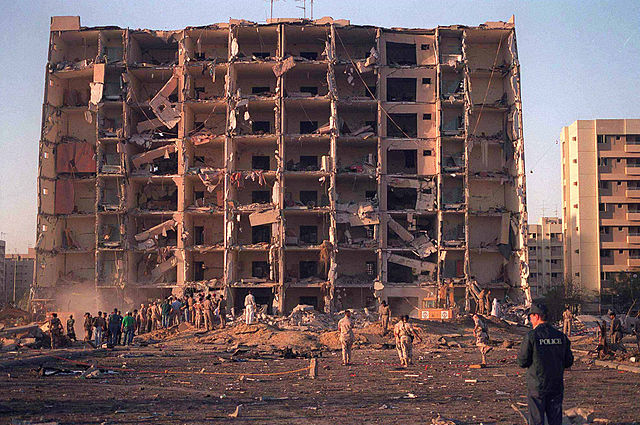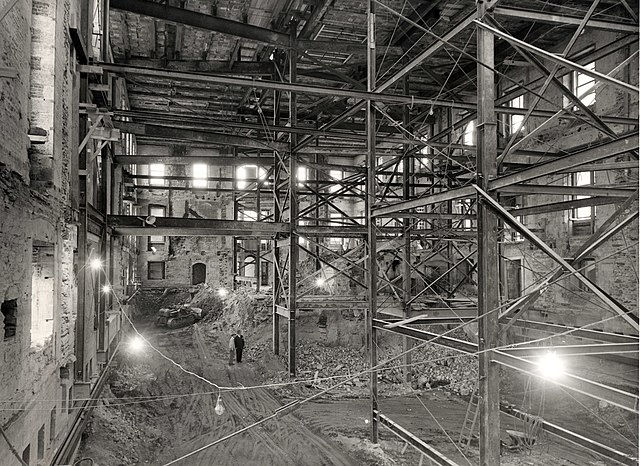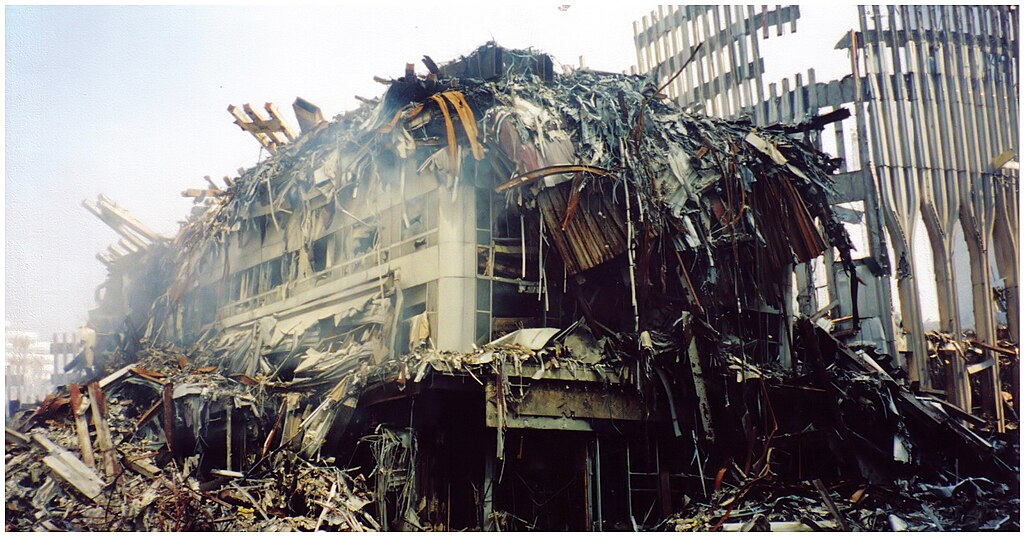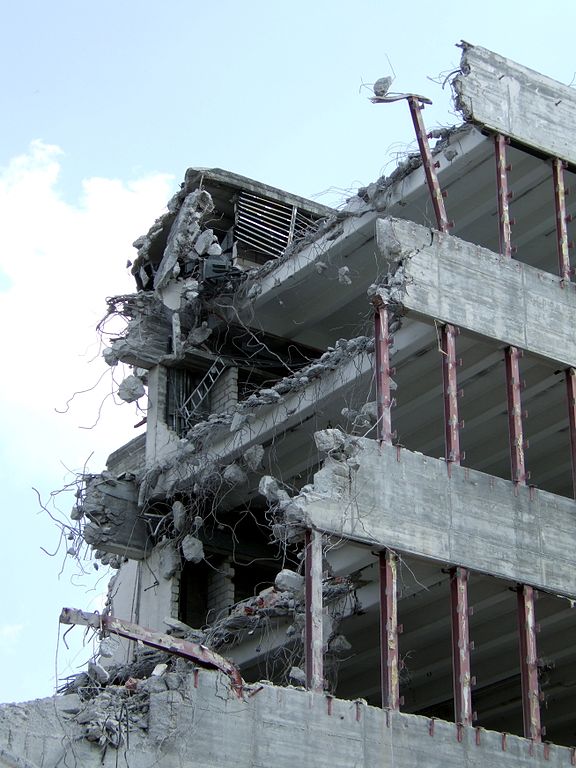Post 133 - by Gautam Shah
.
.
Buildings are demolished to place new structures, destroyed
to dispose off the unsafe entities, and deconstructed to
preserve or reuse valuable sub-components. Buildings also get
devastated by natural calamities (floods, earthquakes,
hurricanes, tsunamis, landslides etc.), man-made disasters
(fires, explosions, wars, acts of mischief and terror), and
through carelessness such as inadequate design, poor
maintenance or repairs.
 |
| Khobar Towers bombing in Dhahran, Saudi Arabia on 25 June 1996 Wikipedia image |
Buildings are conceived to be long-lasting assets. The
execution of it takes time, and is a costly affair. A building has
uncertainty about it. No one precisely knows how long it will
last, and no one can predict how long it will remain functionally
relevant and commercially valid. Buildings’ relevance or validity,
are also dependent on external factors such as the
neighbourhood, politics, styles, and social trends. Buildings are
perpetuated so long as the structure is safe, and external
services make it inhabitable. Buildings are doctored in may
ways, like, restored, renovated, repaired, reformed, conserved,
reinforced or retrofitted. These interventions make a building
functional for some other purpose, if not the original.
The decision to demolish a building arises out of many
considerations. Old buildings are removed, when safety and
security are suspect without even waiting for the redevelopment
plans or investors being readied. Old buildings are destroyed
when there is a prospect of a new activity on the same site
for new functions, for larger built-up volume, incorporation of
newer technology for use-functions and for services, for
implanting a new commercial or social image and for matching
with the ethos of a current day neighbourhood. There is some resistance to demolition of public or private buildings with some
historical linkage or metaphoric values. These necessitate
stake-holders involvement in the process. Buildings being
commercially replaced find few such problems.
 |
| Flickr image by Colin Davis |
Demolitions incur costs of scavenging the structure for
recyclable components and materials, pulling down a
structure, carting away the debris removal, charges for
environmentally safe disposal and costs of mitigating the
risks. Demolition of buildings with recyclable materials such
as wood, metals, stones and bricks, help to recover the cost of
demolitions. Similarly buildings with antique components are
highly valued. Older buildings are often built with massive
materials, taller floor heights, and a new building at the same
site is likely to be spatially leaner and minimalistic, and energy
efficient, providing great advantage. Demolitions, require
attention to several processes. These mandatory processes
include permission for destruction, the methods of demolition,
schedule, logistics of handling, loading and carting away the
debris, recycling the removed material, and safe and adequate
disposal of hazardous and other debris. In many localities one
may need to indicate who-how the vacant plot will be
maintained or used till an approved building system is
regenerated.
 |
| White house destruction for reconstruction 1950 |
The methods of demolition depend on the scale of the
building (number of stories, volume, footprint ) complexity of
structure (assembled, framed and in-filled or fully integrated),
locality, road access, debris carting route and allowable
schedules, reaches of the demolition equipment, health
hazardous conditions due to noise, vibrations, dust, etc. Building
demolition occurs in a very tight schedule. The delaying
factors are: scavenging for recyclable components and materials
and the removal of the debris and the disposal management.
Smaller buildings are pulled down using manual tools, but
buildings of low heights and extensive footprints (plinth area)
are demolished by ground-based equipment with deeper
reach. Tall buildings require floor by floor demolition or use
wrecking ball cranes. Buildings with bricks, precast blocks or
stone masonry can be demolished in parts, but integrated
structures like RCC frameworks, welded steel frames need careful
planning about how the parts are destroyed and temporary
support systems. Very large buildings are destroyed by
implosion techniques so that debris falls within the premises.
 |
WTC 3 debris
Wikipedia image by Kafziel
|
Demolitions of large integrated structures are done after careful
evaluations such as strength and behaviour of materials at
near failure or collapse state, yield deformations, shear
ruptures, mass versus weights factors. Demolition of disaster
affected remnants of the buildings offer very little interim
time for studying the buildings’ system.
 |
| Stepped demolition Image by “LepoRello (Wikipedia)”. |
Options to demolitions are few. Displacements or relocations
of the buildings have been tried, but involve a great expense
and risk. Relocation of building is carried out in two basic ways.
Buildings are deconstructed and reassembled, or transported as
a whole to another location. The first approach requires building
to be consisting of separable and re-unite-able parts,
whereas the later one requires building to be an integrated
entity. In reality buildings are exclusively neither of these.
Debris management is difficult for an individual site owner to
handle. Paris once had no local government to handle it. The
debris of demolished or falling off buildings was spread out or
dumped into near by river or low areas. These resulted in many
streets getting buried up to the first floor level. Some of the
better options are, to reuse the old buildings, design
buildings with greater life-span, and use components and
materials that remain separable and recyclable.
.
.








